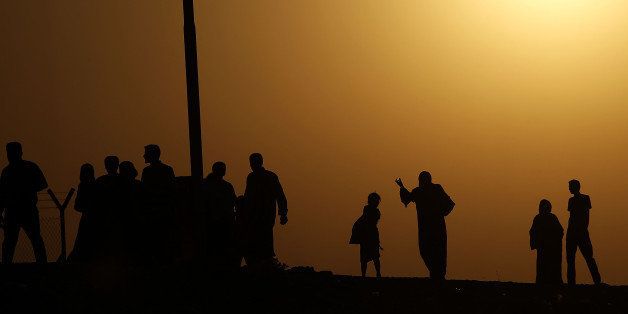
Since the inception of ISIS's campaign of terror in Syria and Iraq, many Western policymakers have assumed that ISIS employs similar strategies to and harbors ambitions akin to those of al-Qaeda. Barack Obama recently declared that al-Qaeda and ISIS are "one and the same," a statement that hearkened back to the erroneous linkage promoted by the Bush administration between Saddam Hussein and the 9/11 attacks. The tendency of the Obama administration to conflate the threats posed by ISIS and al-Qaeda is further evidenced by his claim that anti-al-Qaeda operations in Yemen and Somalia provide a model for the US to follow in its efforts to defeat ISIS.
Obama's Yemen and Somalia parallel immediately drew the ire of Republicans and US foreign policy critics alike because of the continued prevalence of Islamic extremism and woefully inadequate political institutions in both countries. Yet many of these critics still subscribe to the prevailing opinion that the anti-ISIS campaign is just the latest phase of the War on Terror and that ISIS's primary antagonist is the West.
Constant anti-Western proclamations from ISIS's leaders and the beheadings of British and American citizens appear to confirm this opinion, and suggest that ISIS is merely a wealthier and more powerful incarnation of al-Qaeda, However, I believe this assessment is premised on a perilous misconception that overemphasizes rhetorical similarities between both organizations. Indeed, it is frequently overlooked that unlike al-Qaeda, ISIS's main short-term enemies are rival jihadists not the West.
While al-Qaeda funded Boko Haram and occasionally transcended sectarian lines by aligning with Shiite terror group Hezbollah, ISIS has engaged in open belligerence towards rival terrorist organizations. Al-Qaeda severed its relationship with ISIS in February 2014 and ISIS has described Hamas as heretics who need to be destroyed in order for Palestinians to effectively confront Israel. ISIS also possesses a much more centralized command structure than al-Qaeda, which, has caused it to envelop rather than cooperate with rival jihadists. The recent alliance between Syria's Al Nusra Front (an al-Qaeda-affiliated organization) and ISIS reveals that ISIS's military capabilities are a more effective carrot to entice allies than its brand of radical Islamist ideology. Submission by the sword is the means that drives ISIS's expansion.
ISIS's strategy of enveloping terrorist groups increases the likelihood of its operations spreading to other countries in the Middle East and Sub-Saharan Africa, as it will seek to supplant rather than tolerate the existence of jihadist organizations with divergent views. The diffusion risk and unprecedented economic and military capabilities ISIS possesses should compel US policymakers to devise a new approach to combat the threat it poses.
The differences between al-Qaeda and ISIS indicate that precedents for the anti-ISIS campaign should not be derived from anti-al-Qaeda efforts. Instead, since combatting ISIS requires a synthesis of containment and rollback (removing ISIS from territories it occupies), many lessons can be derived from America's confrontation against communist movements during the Cold War. Like ISIS, Marxist guerilla organizations were most successful in countries like Vietnam and Angola, which possessed fragile political institutions or were ruled by despotic regimes. Additionally, factional rivalries between Communist organizations often caused Chinese proxies to develop in countries where Soviet proxies were strong (or vice versa), which increased the likelihood of communist diffusion.
The ISIS-al-Qaeda internal conflict is triggering a similar kind of reciprocal escalation, as evidenced by the emergence of al-Qaeda proxy Khorasan to combat ISIS's growing influence in Syria. As ISIS's financial coffers continue to swell and its hold on territory in Iraq and Syria consolidates, it is conceivable that ISIS could create proxies in Yemen, Mali and Somalia with the intention of enveloping al-Qaeda and al-Shabaab. The emergence of a ISIS foothold in Jordan, (which is a relatively stable state notwithstanding localized turmoil stemming from the influx of Syrian refugees), further highlights the prospect of ISIS diffusing in a similar manner to communism in the Third World.
While US policymakers remain alarmingly unprepared to combat a potential ISIS contagion, the US could at least partially mitigate the diffusion risk by considering lessons derived from Cold War containment policies. Firstly, the US needs to expand the scope of multilateral engagement to combat ISIS. Much like NATO and the Baghdad Pact operated as effective bulwarks against communism, the United States needs to closely engage with the Arab League to devise a common anti-ISIS strategy that provides for the collective security of all Middle East states. Collaboration with ISIS in any form should be severely disincentivized, and the Arab League should strictly punish direct violations (state funding of ISIS) or indirect violations (lack of enforcement of private donations to ISIS). Building a consensus around the financial isolation of ISIS is achievable as ISIS poses an existential threat to many Middle Eastern states. If the Arab League takes the initiative in cracking down on ISIS donations from actors within their borders, the anti-ISIS campaign will have much more legitimacy in the eyes of the Arab public than a set of Western-imposed sanctions.
Secondly, America must eschew the tempting argument that its overwhelming air power alone can single-handedly vanquish ISIS. Considering the abject failure of air power to guide the US to victory in Vietnam during the 1960s and state consolidation crises in Iraq and Libya that are in part attributable to inadequate policing by international forces after a successful regime change, American policymaker's myopically positive view of air power is surprising. Vietnam also nakedly exposed the perils of America's chronic underestimation of non-great power opposition. Guerilla forces displayed remarkable tactical flexibility by escalating their MiG campaign in 1967 precisely in tandem with the escalation of US aerial bombardments. The prospect of US air power emboldening ISIS to test American resolve and to adhere to the assumption that the US will back down if the casualties escalate to an unacceptably high level, is a frightening prospect inadequately addressed by current military strategies.
While I do not advocate the widespread use of ground troops to supplant the current US air power-driven policy, I believe the United States must express greater caution in categorically ruling out a ground troop presence in a particular conflict zone. Ground troops are most effective where they can coordinate with unambiguously anti-ISIS actor. Therefore, America should resist the temptation of employing ground troops in Syria in the short-to-medium-term, but consider placing boots on the ground in Iraq, where relatively credible partnerships can be forged with the national army and Kurdish Peshmerga.
The success or failure of American anti-ISIS strategies will ultimately depend on the willingness of US policymakers to recognize ISIS as a threat wholly independent and distinct from that of al-Qaeda. Unfortunately, given the dysfunction in Congress and with midterm elections, it is probable that US policymakers will continue to use tried and tested counter-terrorism strategies and prioritize short-term political expediency over the development of a grand strategy that can durably vanquish the ISIS threat.
